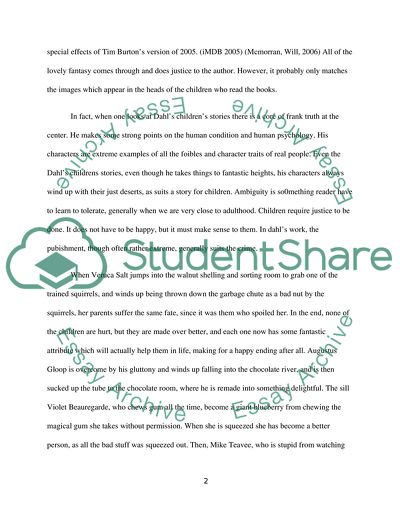Cite this document
(Roald Dahl Essay Example | Topics and Well Written Essays - 2250 words, n.d.)
Roald Dahl Essay Example | Topics and Well Written Essays - 2250 words. Retrieved from https://studentshare.org/literature/1543908-critical-analysis-on-roald-dahls-writing-style-and-his-influence-on-my-writing
Roald Dahl Essay Example | Topics and Well Written Essays - 2250 words. Retrieved from https://studentshare.org/literature/1543908-critical-analysis-on-roald-dahls-writing-style-and-his-influence-on-my-writing
(Roald Dahl Essay Example | Topics and Well Written Essays - 2250 Words)
Roald Dahl Essay Example | Topics and Well Written Essays - 2250 Words. https://studentshare.org/literature/1543908-critical-analysis-on-roald-dahls-writing-style-and-his-influence-on-my-writing.
Roald Dahl Essay Example | Topics and Well Written Essays - 2250 Words. https://studentshare.org/literature/1543908-critical-analysis-on-roald-dahls-writing-style-and-his-influence-on-my-writing.
“Roald Dahl Essay Example | Topics and Well Written Essays - 2250 Words”. https://studentshare.org/literature/1543908-critical-analysis-on-roald-dahls-writing-style-and-his-influence-on-my-writing.


